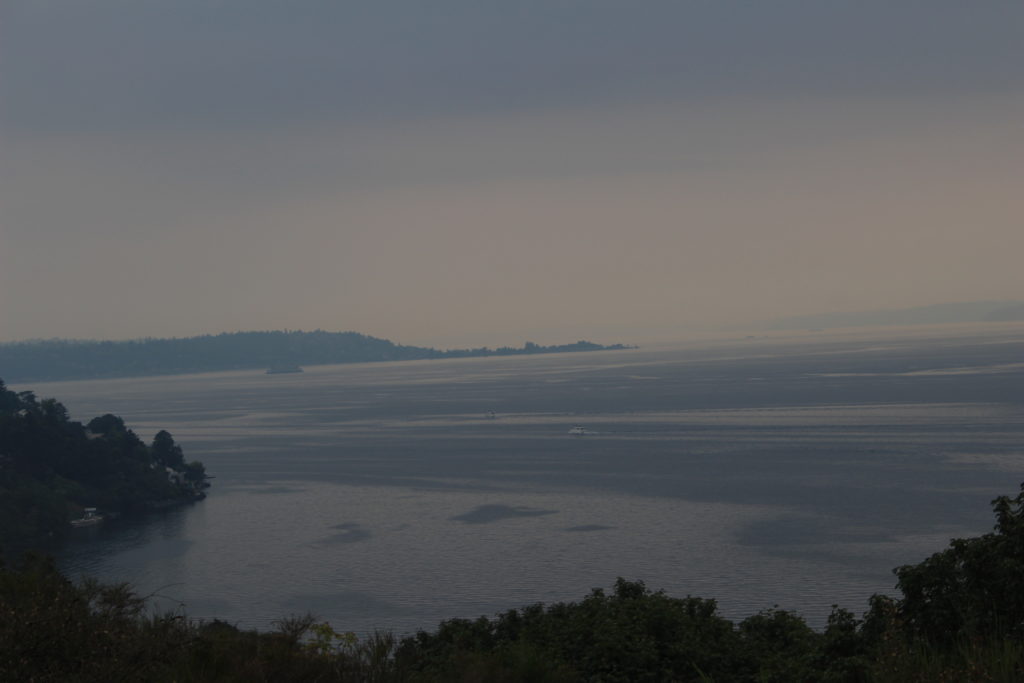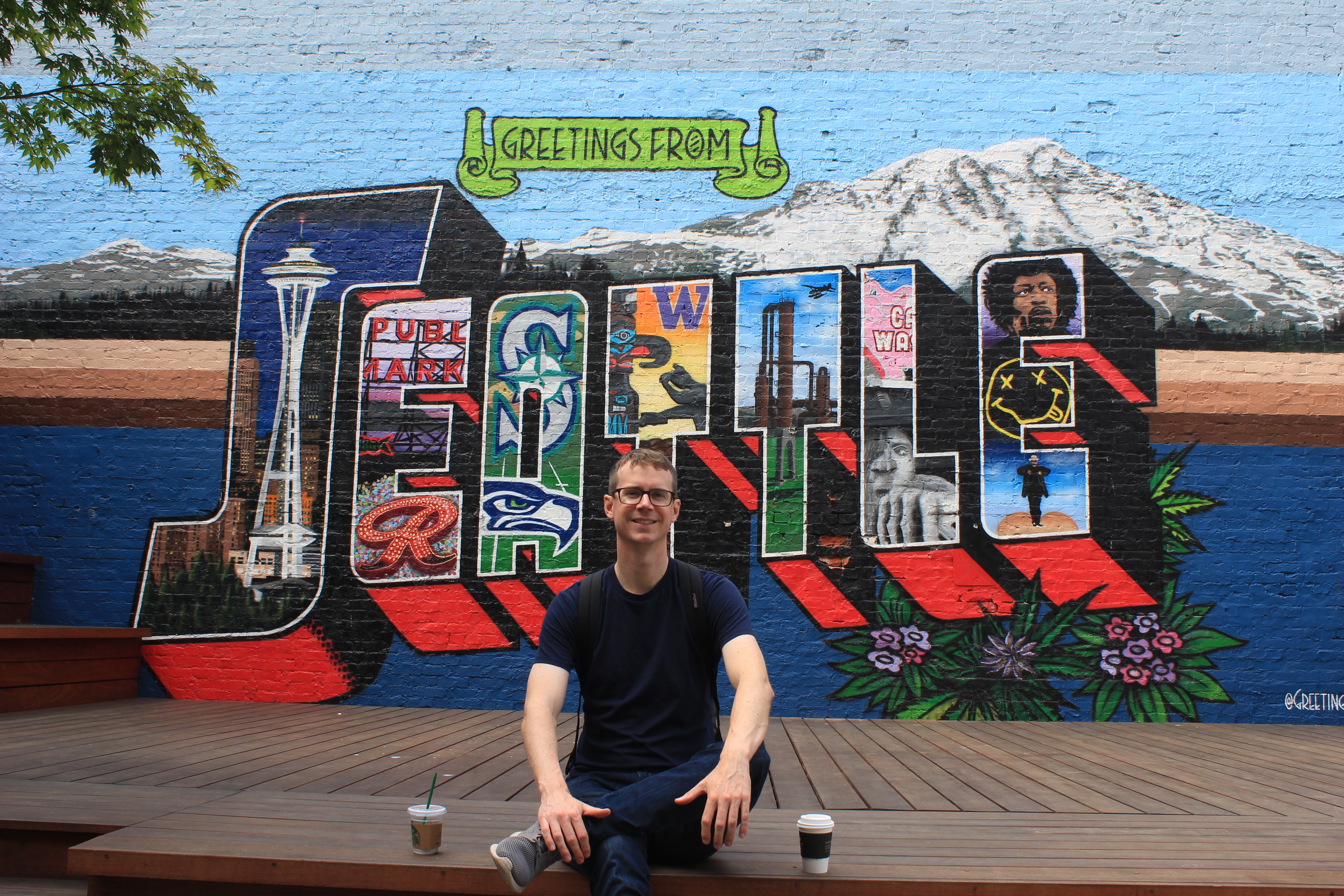After a grueling border interrogation, we entered the vast green forests of Washington state. Our first stop was Boeing’s Everett factory, about 40km north of Seattle. This is the largest building in the world by volume, purpose-built to assemble Boeing’s giant 747s (aka the Jumbo Jet). Tours of the plant have been going since it opened in the late 1960s, and we hopped on one to investigate.
The tour was slick – you are on a trolley, then up lifts to viewing decks of the factory floor below, then shown videos and hear interesting stories about the place. The plant has been expanded to include production of the 787 Dreamliner. One fascinating aspect of the Dreamliner is that specific parts are produced and assembled in specific countries, and flown into Everett for final assembly. The range of countries involved is huge. These big pieces come in on giant modified odd-looking Boeing aircraft called ‘Dreamlifters’. Given that you have various national airlines all over the world who buy Boeing’s aircrafts, by basing part of the supply chain in countries like Australia, Korea, Japan, Italy, etc., it seems likely that the national carriers may then reciprocate by adding a bunch of 787s to their fleet. Quite a good strategy.
One thing that surprised me on the tour was the lack of activity on the factory floor. Apparently certain work is done at different shifts, and they were doing a lot of testing work when we were visiting, as opposed to physically fixing the pieces together. Boeing only produces about half a 747 a month, but churns out twelve 787s (some from another plant) and 52 of the narrow-body 737s per month. This last model is hugely popular with low-cost carriers, is produced at a different factory, and seems to have become a profit centre for the company. There were no photos allowed on the tour, but they did offer a corny fake photo op:
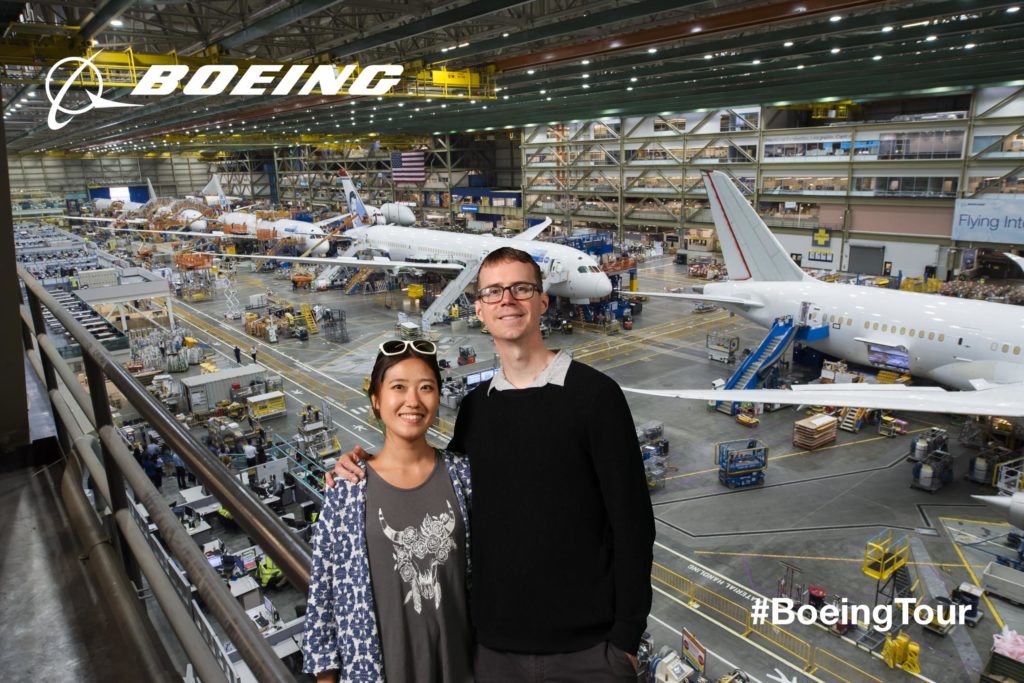
Here’s the view from the parking lot. The assembly factories are in the first picture below, while the huge bays used to paint the aircraft are in the second. Those planes on the tarmac are completed and ready to be picked up by the customers.
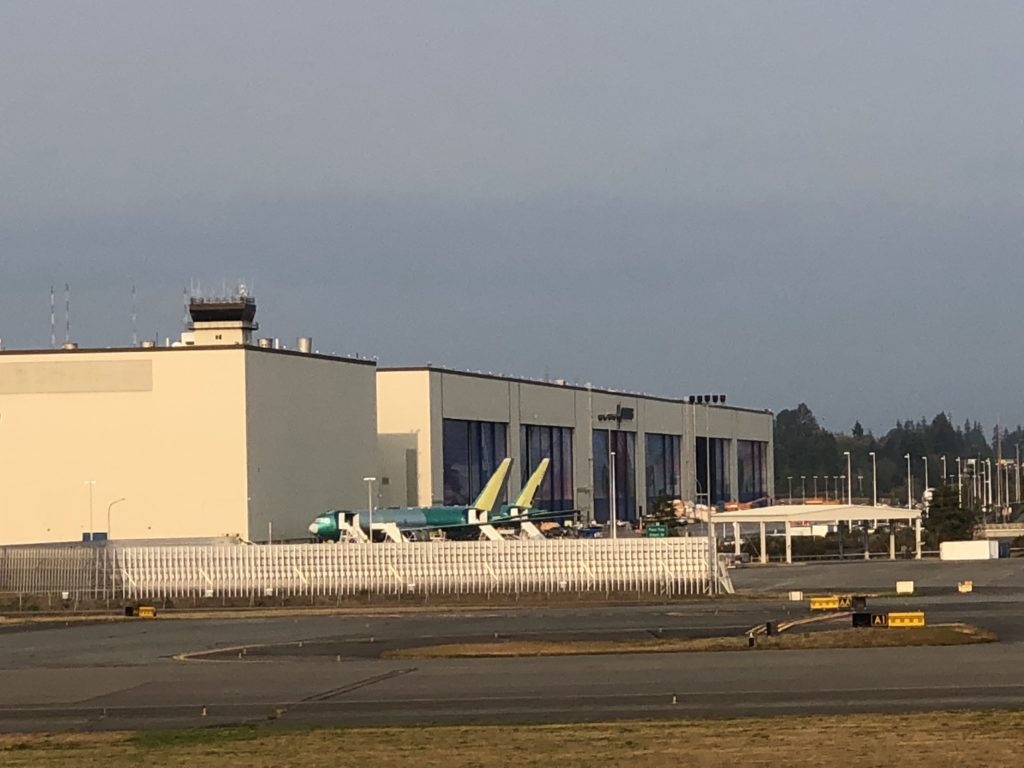
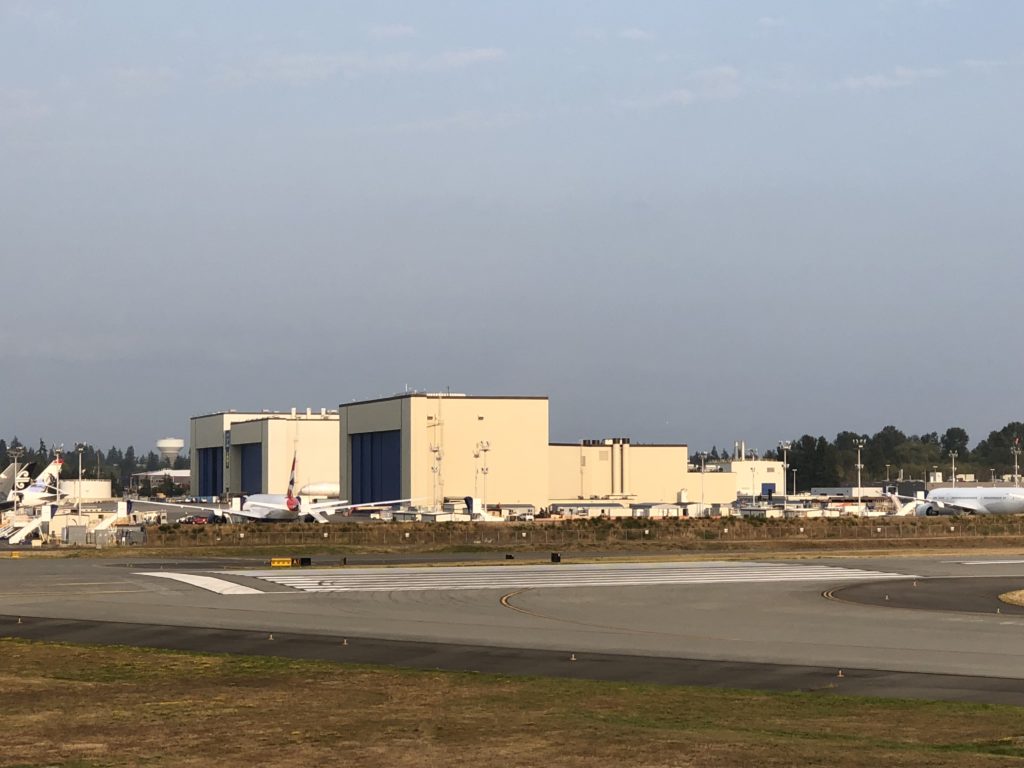
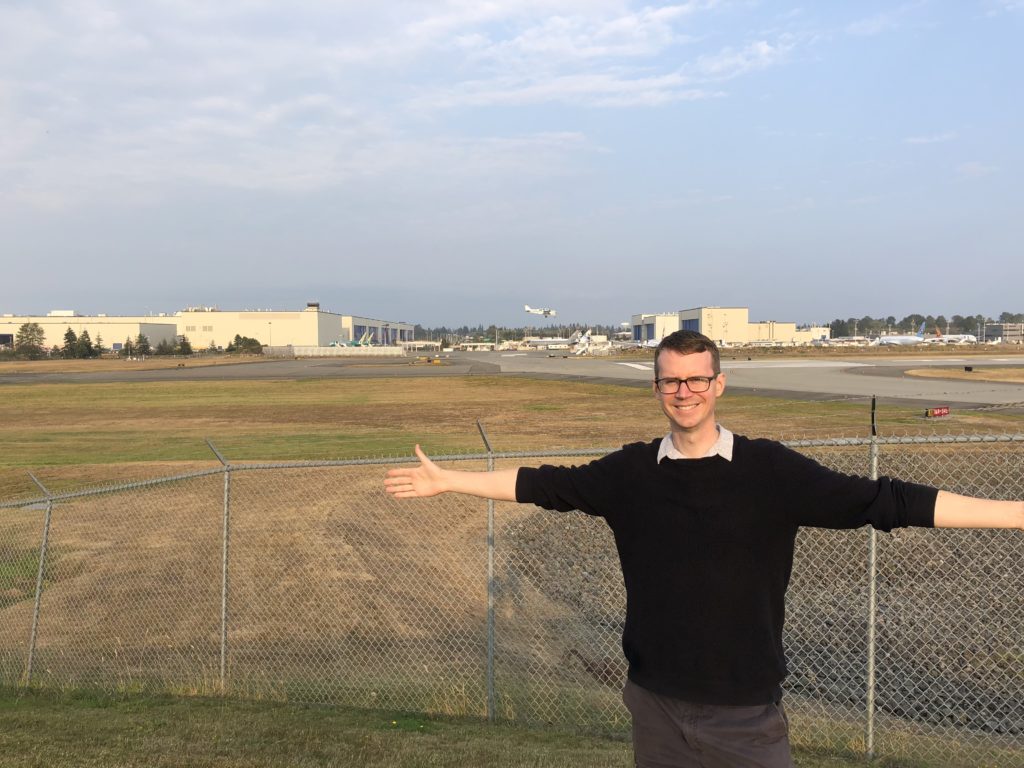
Into the big city. Seattle has a killer skyline. Here are a couple different angles.

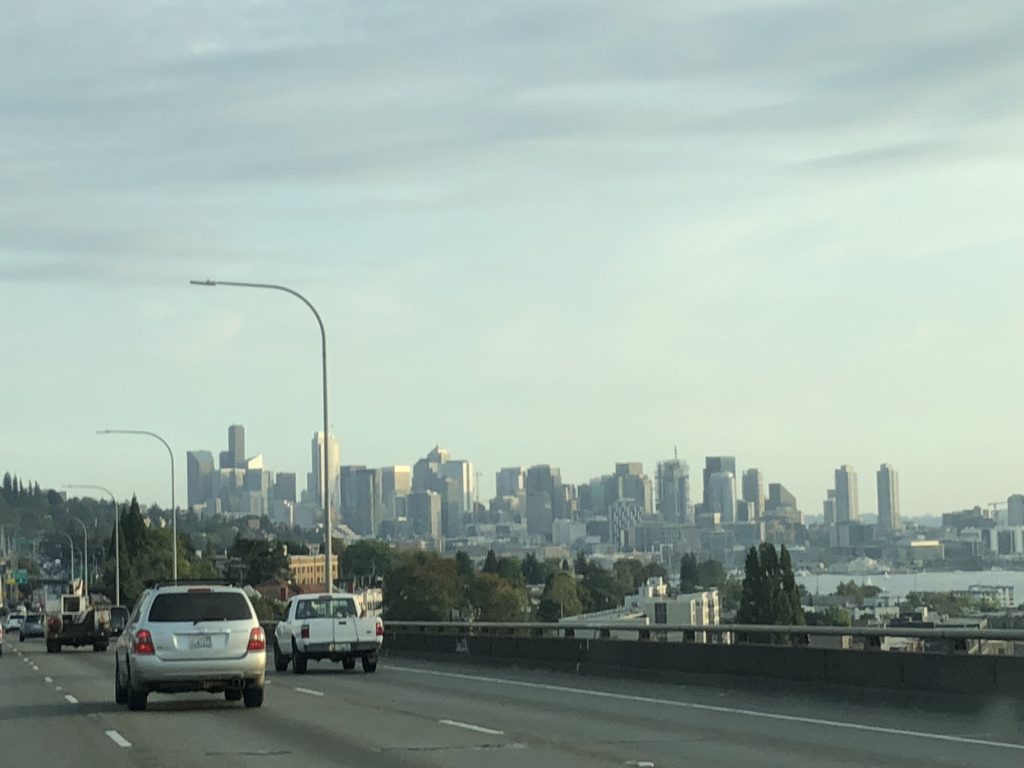
One of Seattle’s most famous attractions is Pike Place Market. It started in 1907 as a way for farmers to sell produce directly to consumers, bypassing wholesalers that had supposedly become a little too greedy. Narrowly avoiding demolition a few times over its 100 year history, it remains today as a unique and diverse public market, and a huge tourist draw. Its an easy place to wander around and get lost for a few hours.
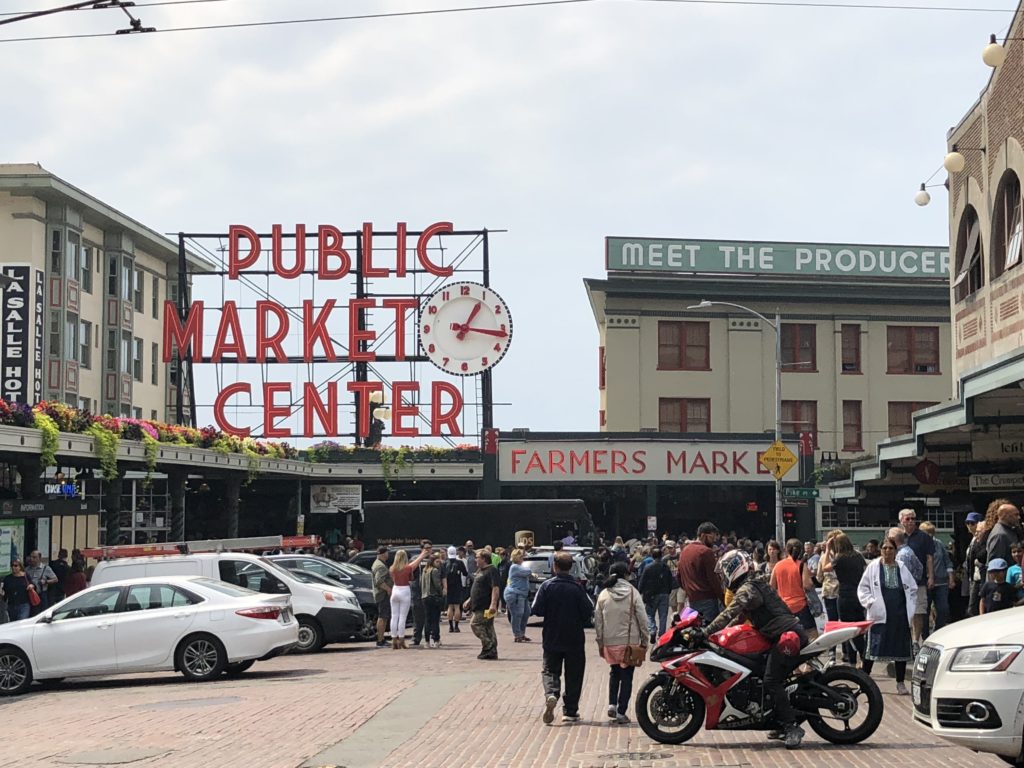
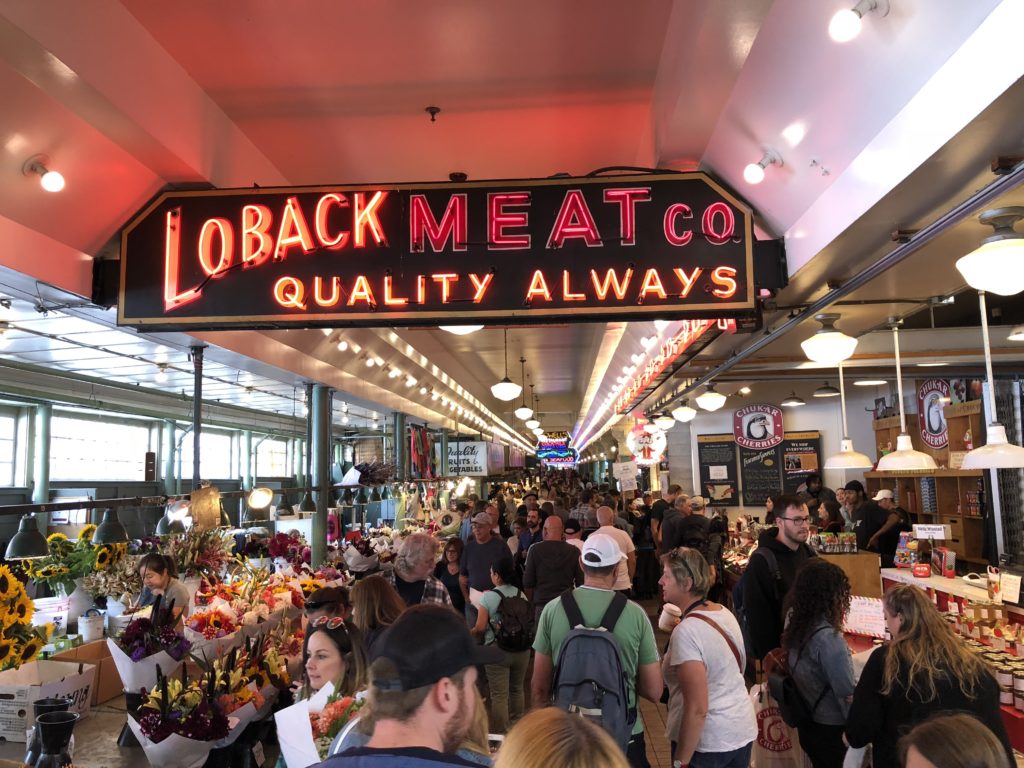
There’s a gum wall. People started sticking gum on one of the market’s walls in 1993. Cleaners scraped them off twice but soon gave up. People kept adding more and more. It was designated a tourist attraction in 1999 and apparently ranks just behind the Blarney Stone in the top five germiest tourist attractions. The wall was completely cleaned in 2015, with workers removing one tonne of gum! It seems to have repopulated quickly. We contributed a couple pieces. It is colourful and pretty gross.
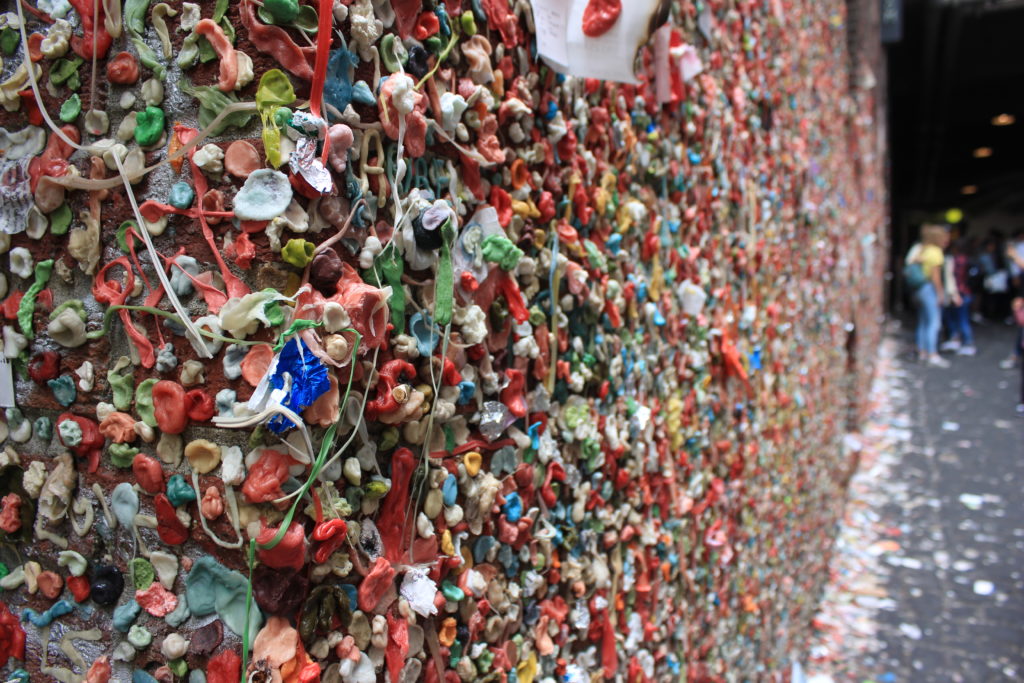
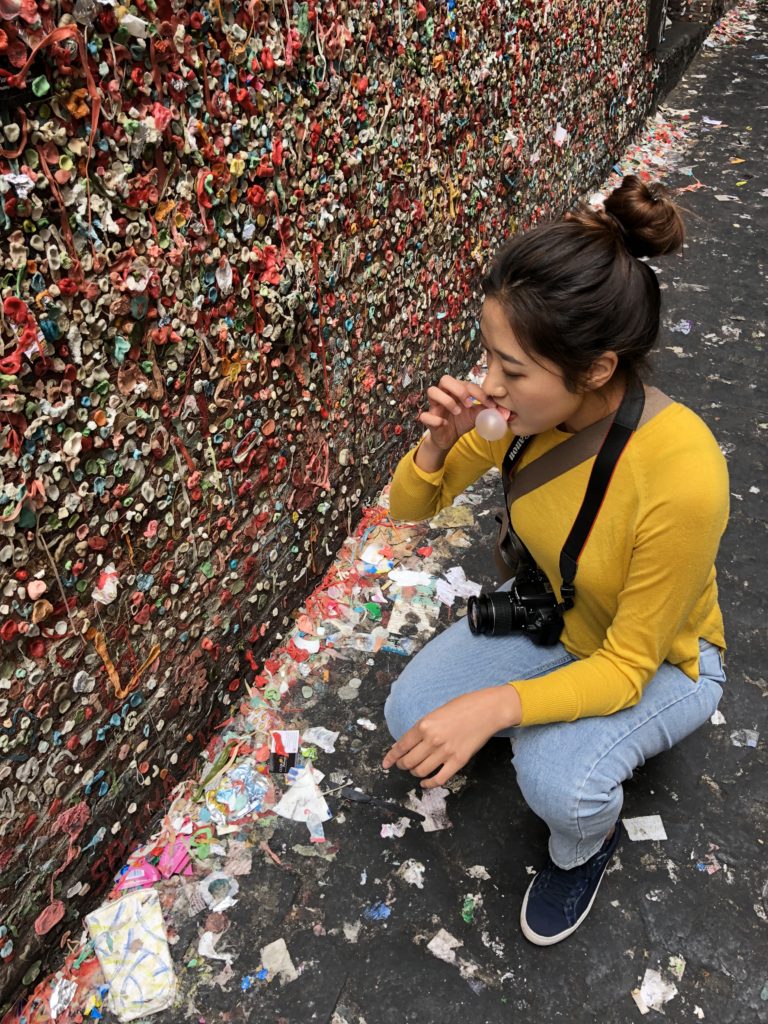
The first Starbucks store, which was founded a block away in 1971, moved to Pike Place Market in 1977. Today, its like a flagship company shop with a huge range of interesting specialty coffees. You have to queue for about 30 minutes and pay a premium, but it still hits the spot.
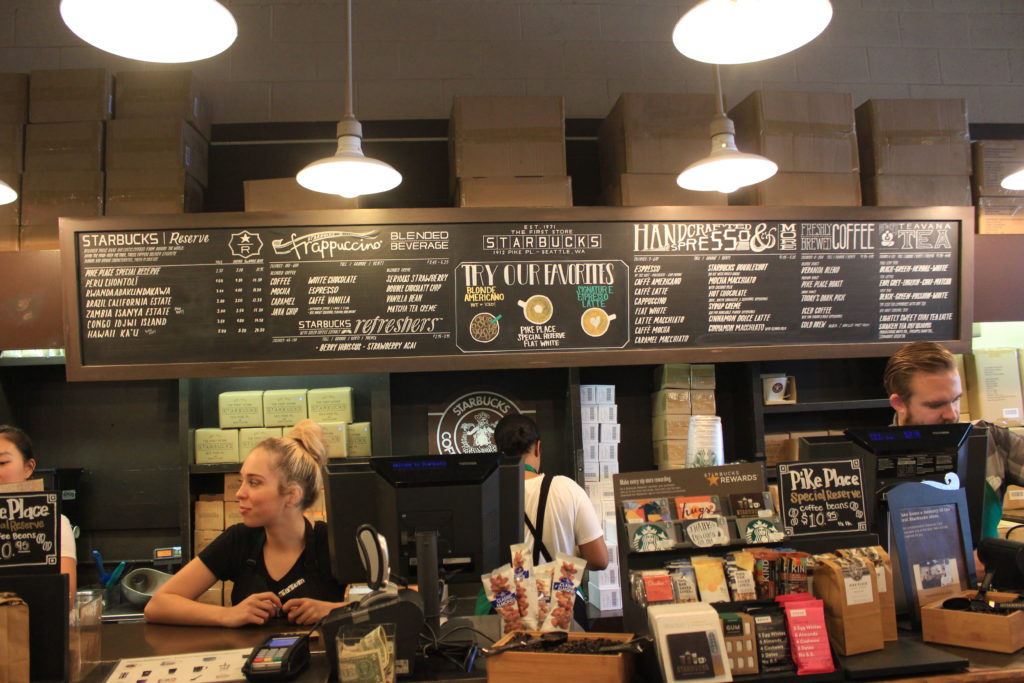

Amazon.com, the internet supergiant, started in a garage in Bellevue (adjacent to Seattle) in 1994. The company, based in Seattle, seems to be steadily taking over the world. We got to see two of its more interesting development projects. The first was a physical bookstore. Amazon got started selling books online, so its interesting to see it move tentatively into offline book retail. Unsurprisingly, it looks a lot like any other bookstore. Three key differences: every book had a printed review placed below it, chosen from Amazon.com’s trove of online customer reviews; the store displayed interesting top 10 lists of books (‘top 10 fiction books in Seattle’, ‘top 10 biographies in the US’); and it displayed lots of Amazon’s own products (kindles and fire sticks, etc.).
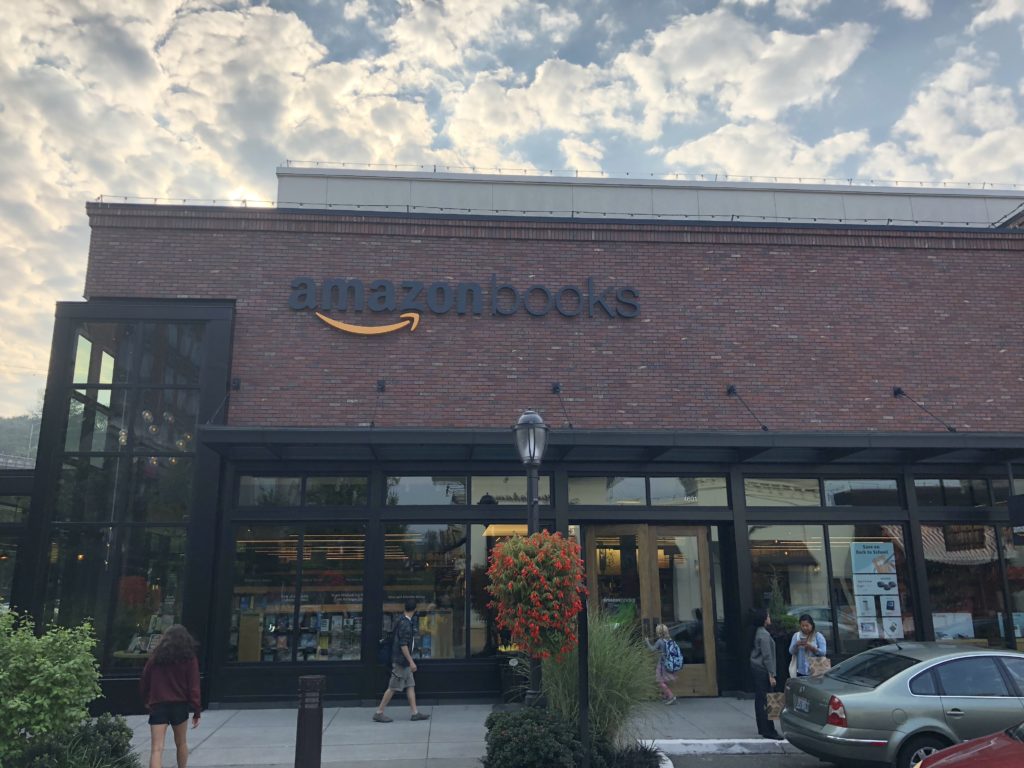
Then secondly, we visited an Amazon Go store, a physical convenience store with a difference. You log into the Amazon Go app on your phone. You walk in, swiping the phone as you enter enter. Hundreds of cameras and sensors watch your every move (!) as you wander around the store and place items into your bag. Then, when you’re done shopping, you just walk out the door. A few moments later you get a notification on your phone telling you what you bought and that your card has been charged. We tried it, and it worked. Pretty darn convenient. A recent news report noted that the company may have plans to roll out 3,000 such stores over the next few years. The future of retail?
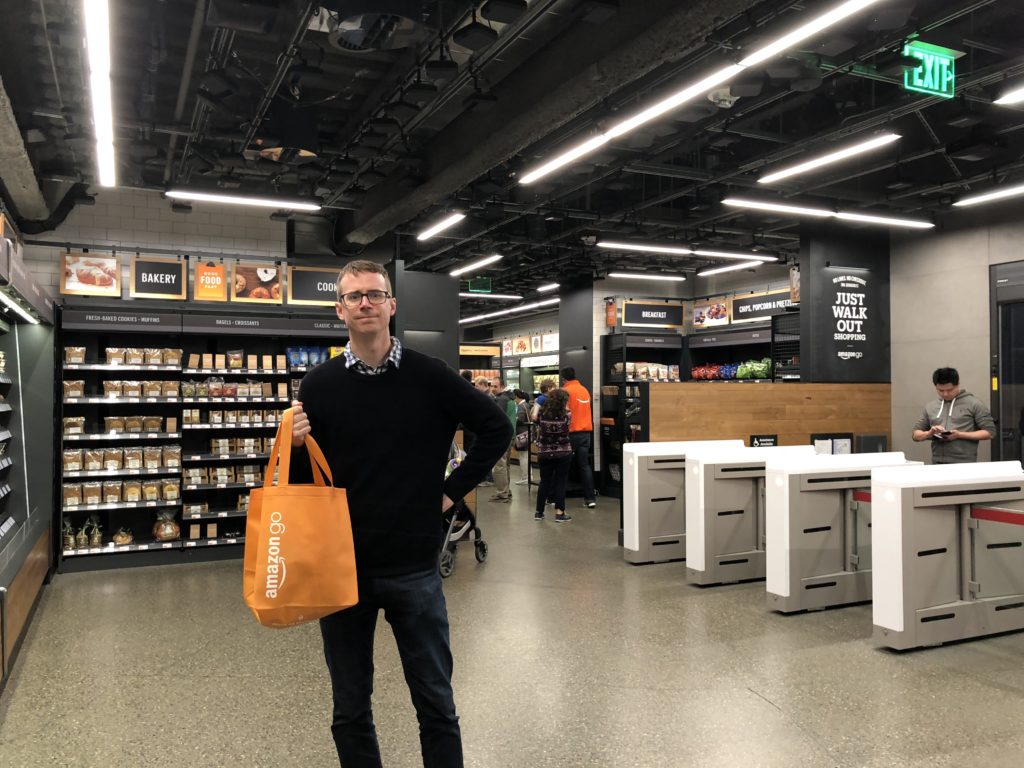
Seattle is, of course, the home of grunge. We visited a bunch of places related to legendary bands like Pearl Jam, Nirvana, and Soundgarden. Here’s the Crocodile, a venue where any budding Seattle rock band wanted to play.
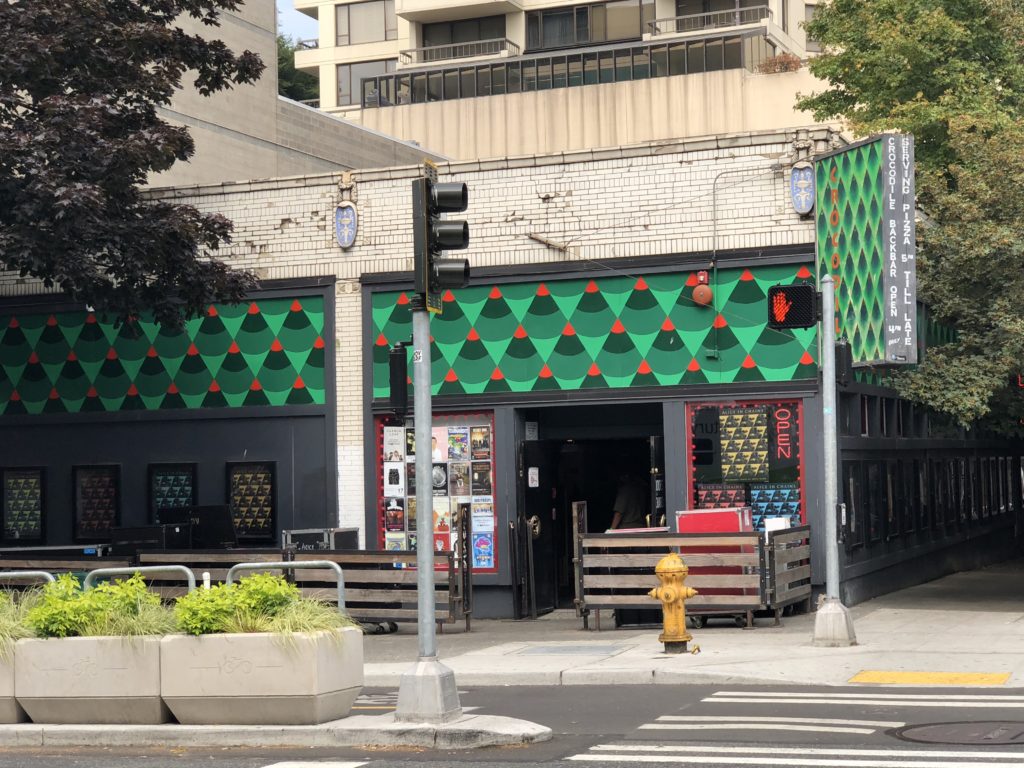
West Seattle’s legendary music shop, Easy Street Records:
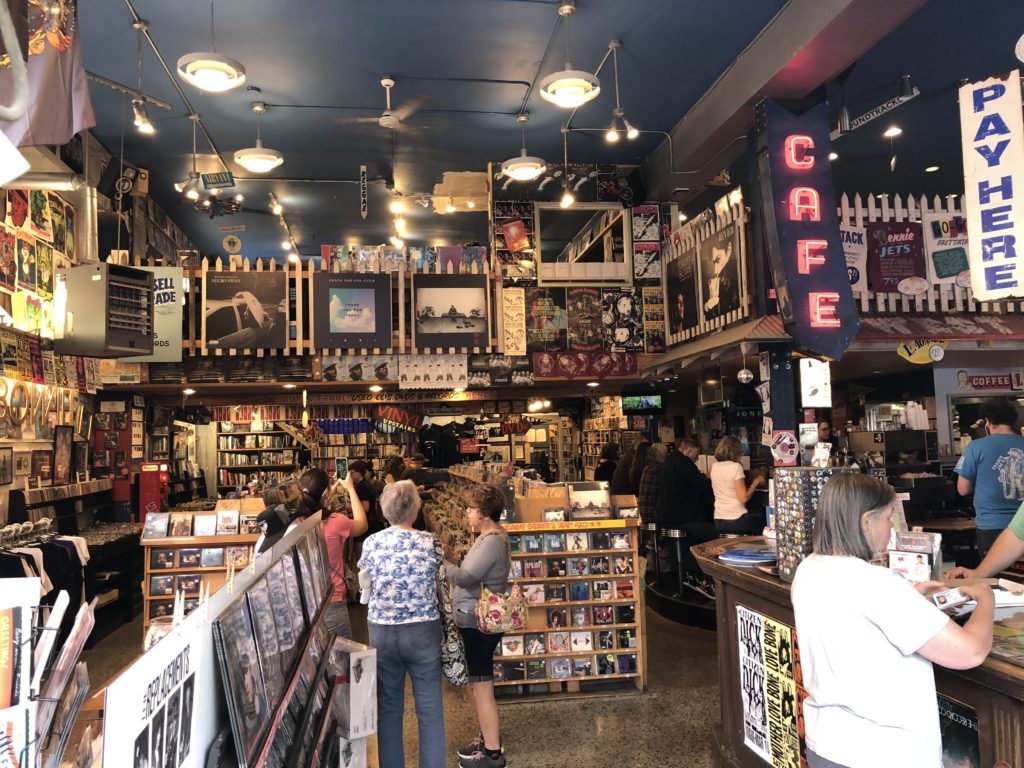
But, the biggest attractions are found in the Museum of Pop Culture. There’s excellent displays on Pearl Jam, Nirvana, Jimi Hendrix (also a local lad), and a host of other themes – science fiction, fantasy, computer games, etc. The Pearl Jam exhibit was outstanding – demo tapes of the various band members, posters from early concerts, original lyric sheets and setlists, a mock studio, concert footage on display, original equipment and smashed guitars… a bit of a shrine to the rock legends.
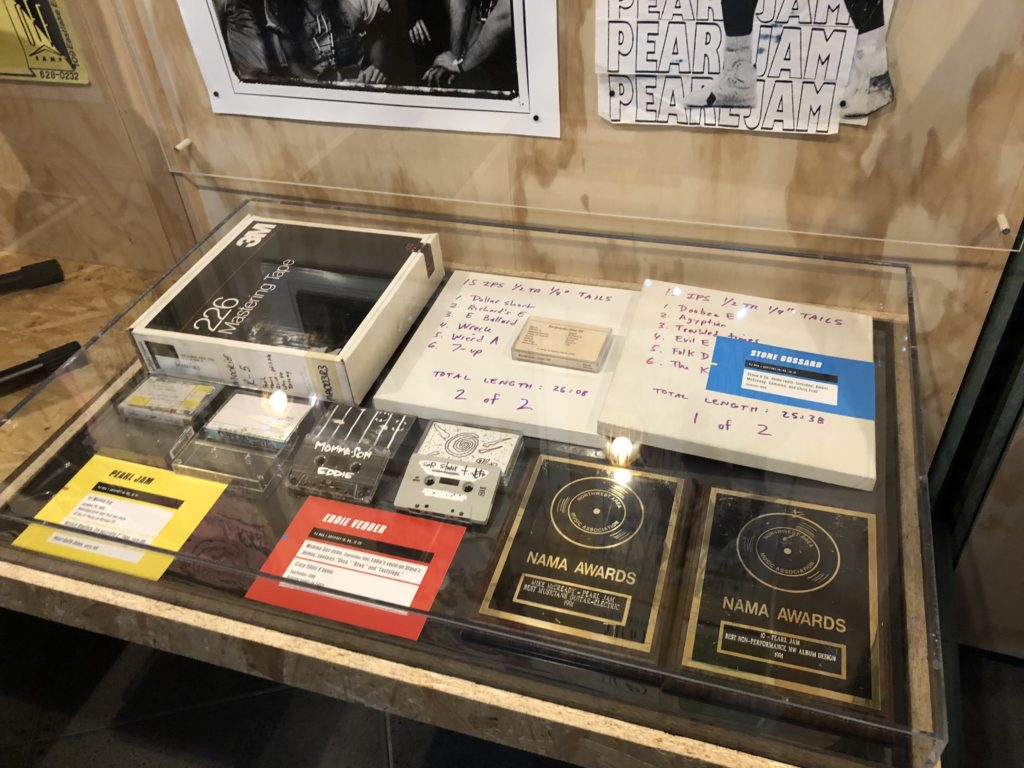
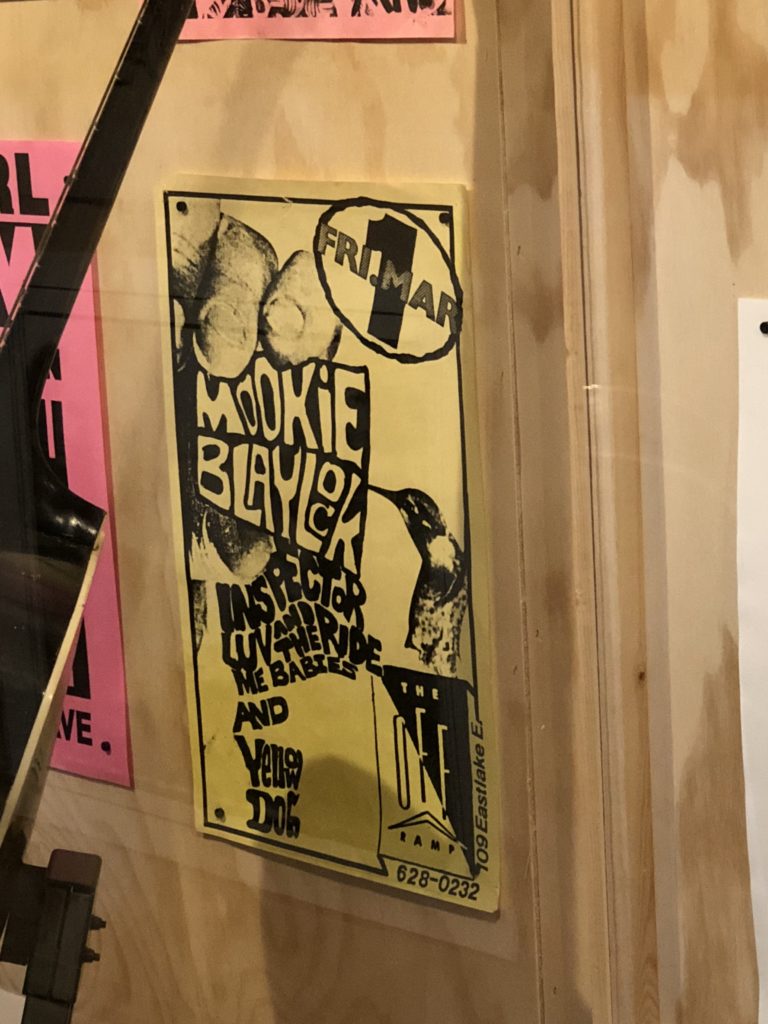
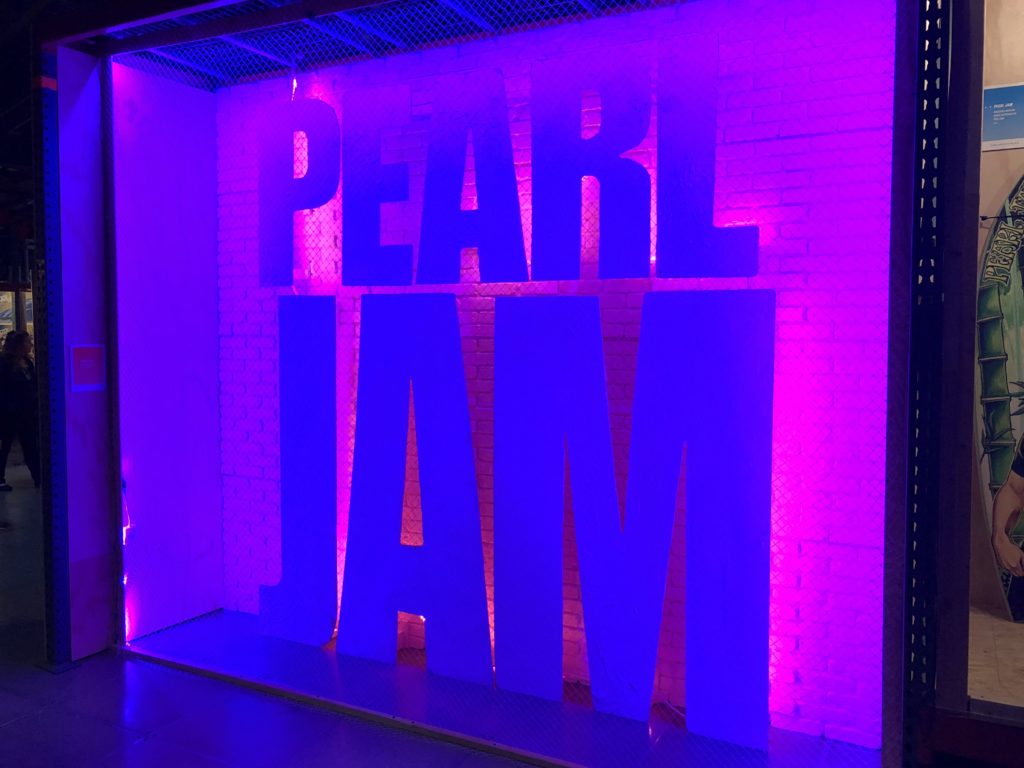
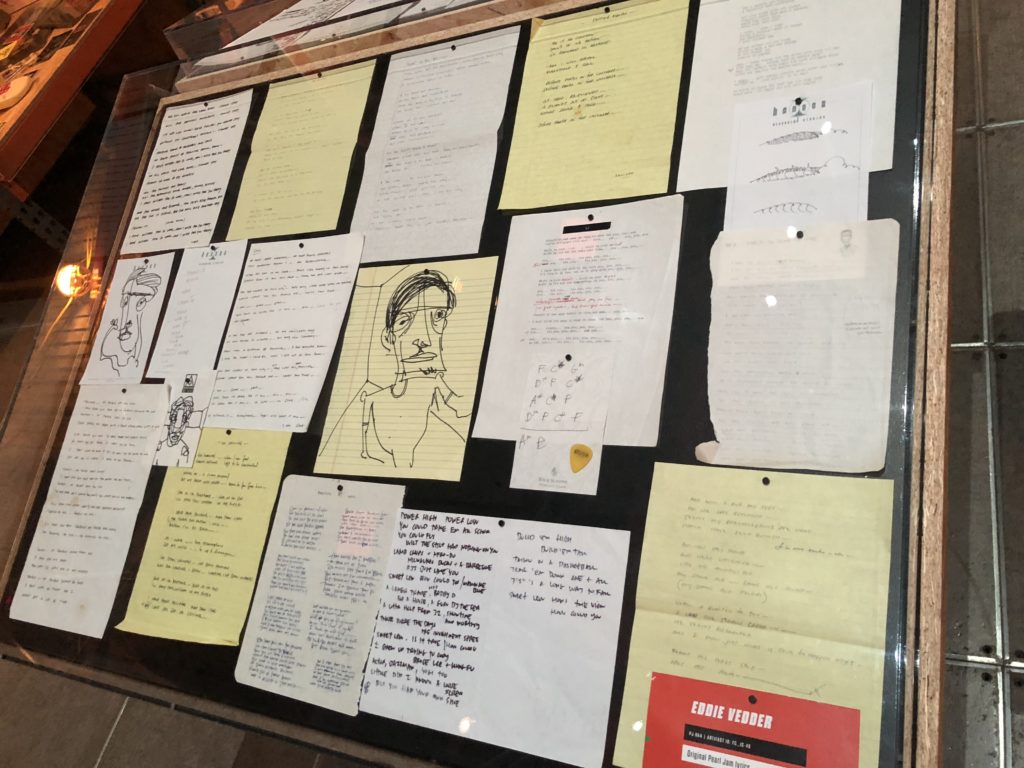
The section on Jimi Hendrix, while small, was fascinating. It houses his favourite Fender Stratocaster, the one used during his epic Woodstock performance. And with displays of original lyrics written on airplane notepads, his diary, letters to friends and family, you get quite a bit of insight into the guitar virtuoso.
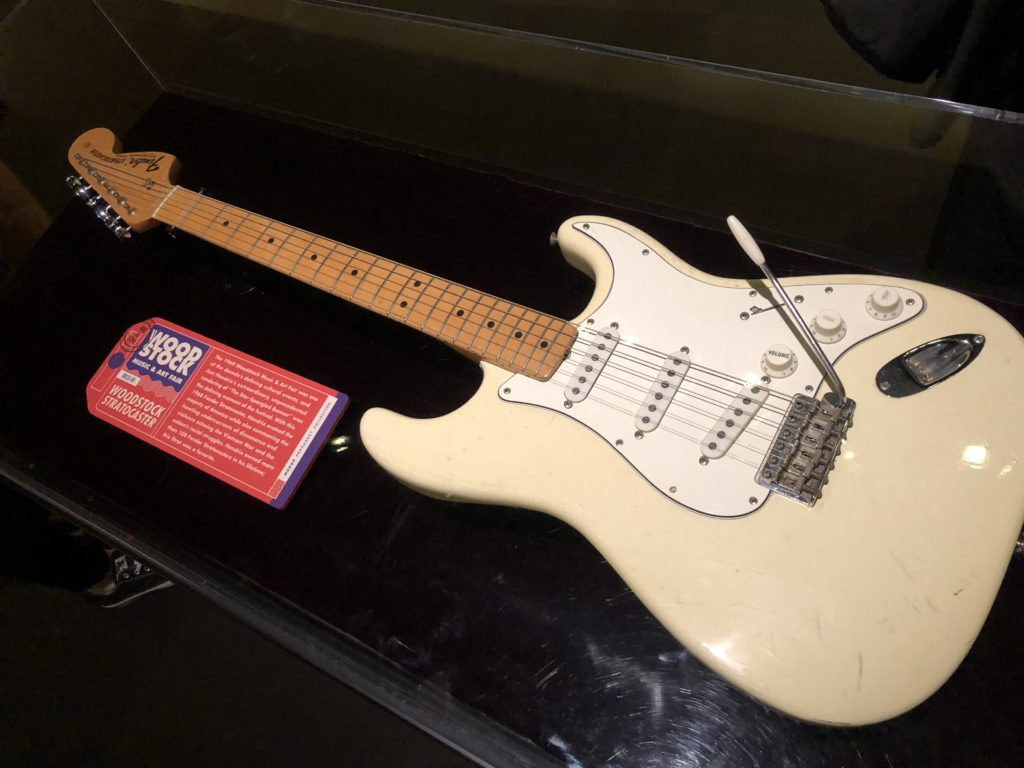
A few other interesting items: the hoverboards from Back to the Future, some Lord of the Rings props, and an art piece made out of 700 guitars.

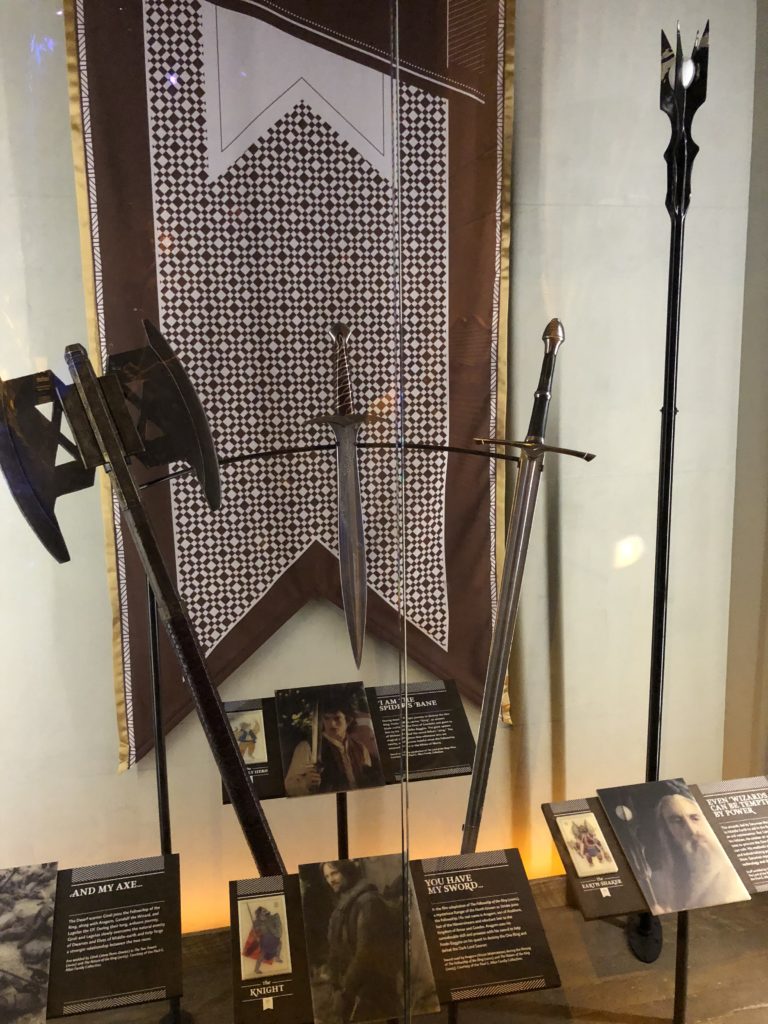
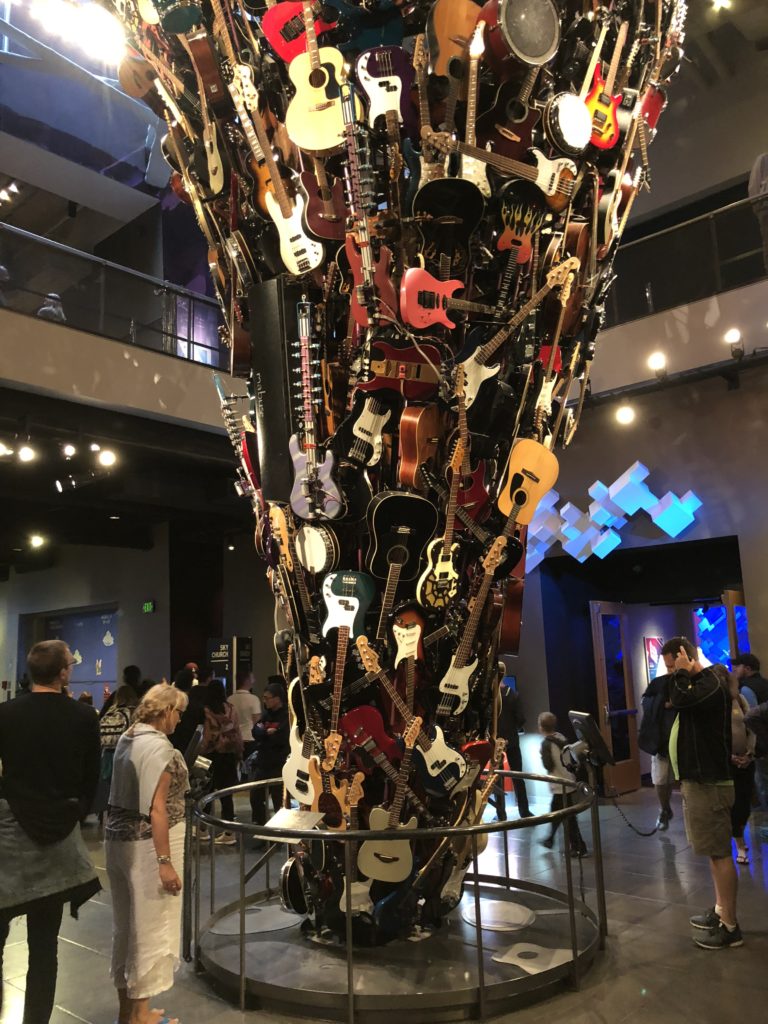
The museum building itself seemed like an art piece, a weird looking one.

While I was engrossed in rock ‘n roll memorabilia, Ella popped into the Dale Chihuly Garden and Glass. He’s a world-renowned glass artist and a local chap. His stuff is weird, certainly unique, and sometimes really impressive. Here are three of Ella’s favourites from the museum:
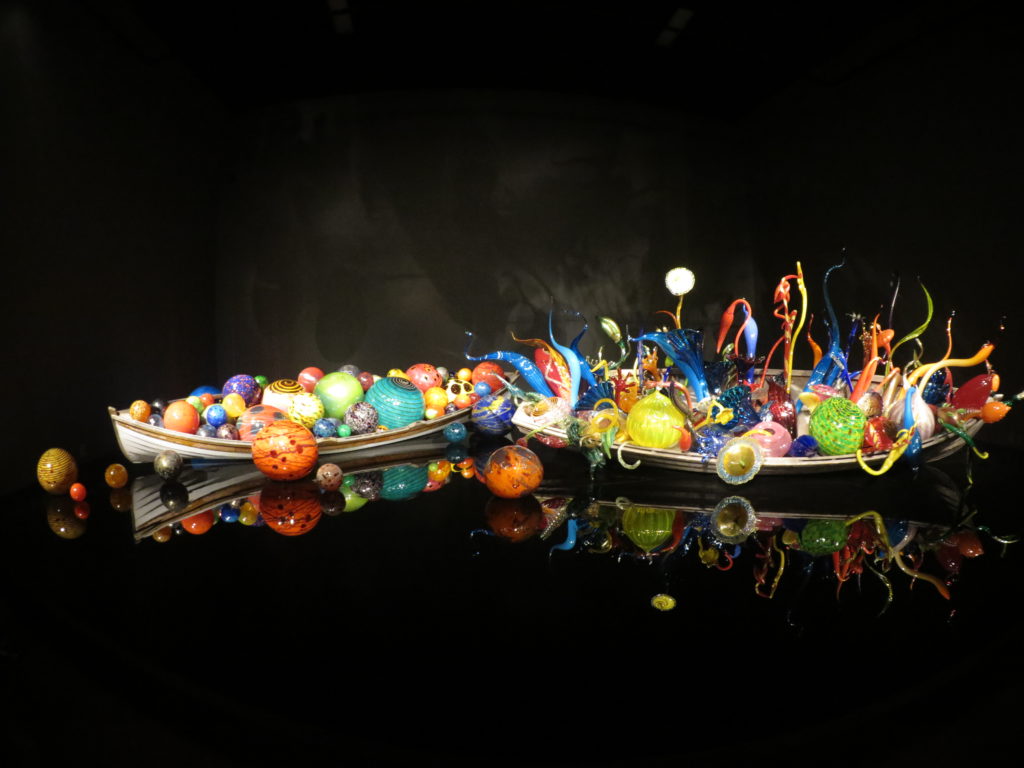
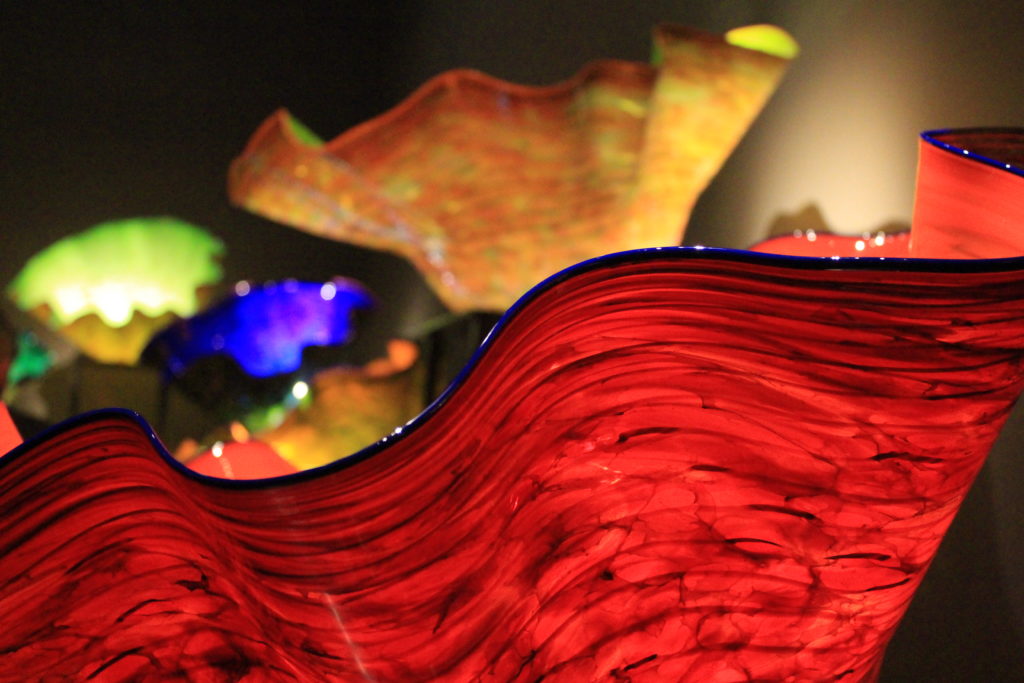
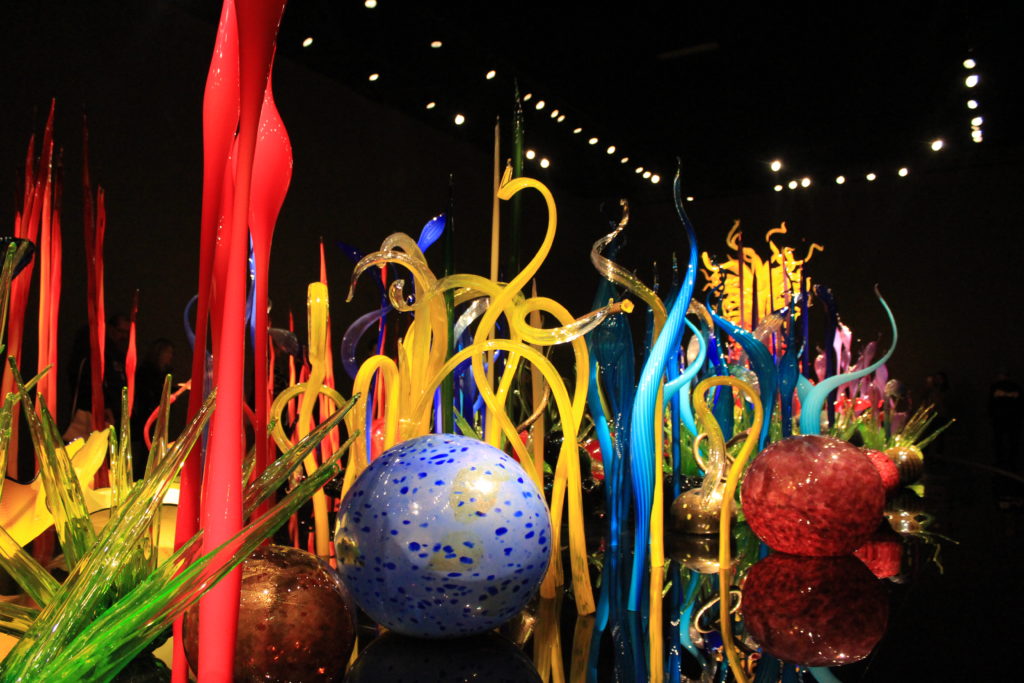
Seattle is an awesome place – for me, one of the highlights of the whole trip. So much has happened and so much is happening in this city – diverse, vibrant, and still quite chilled out. Unfortunately, we had to move on. With the city’s skyline in our rear-view mirror, we headed south along the Pacific coast.
A few more random pictures to wrap-up:
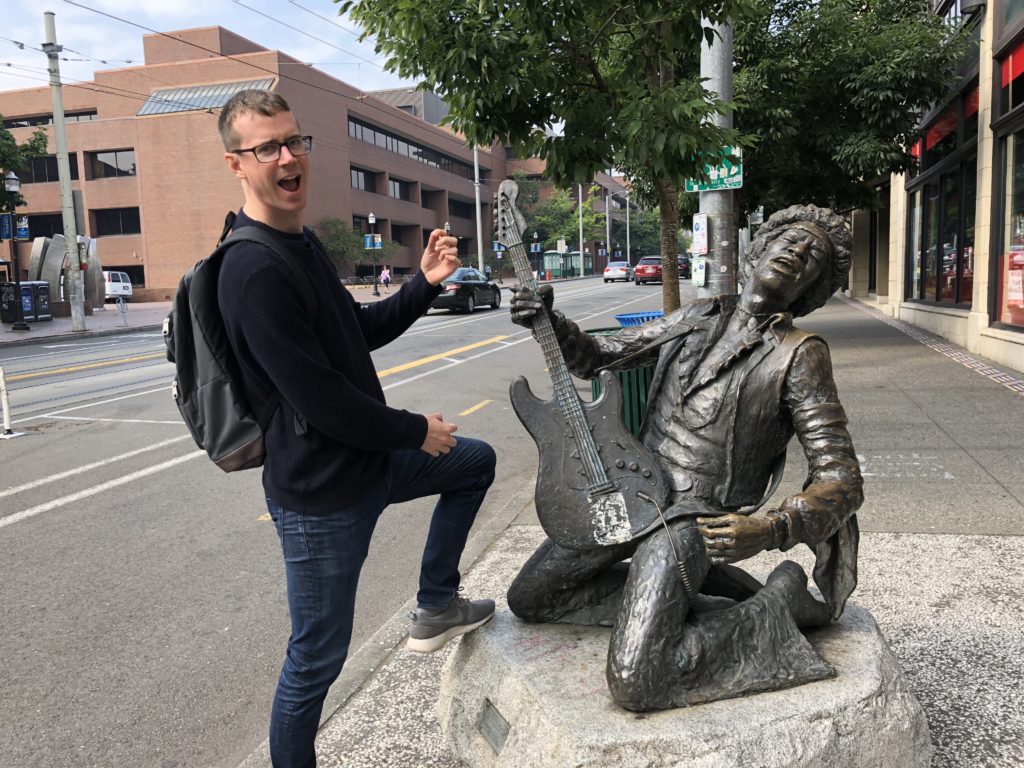
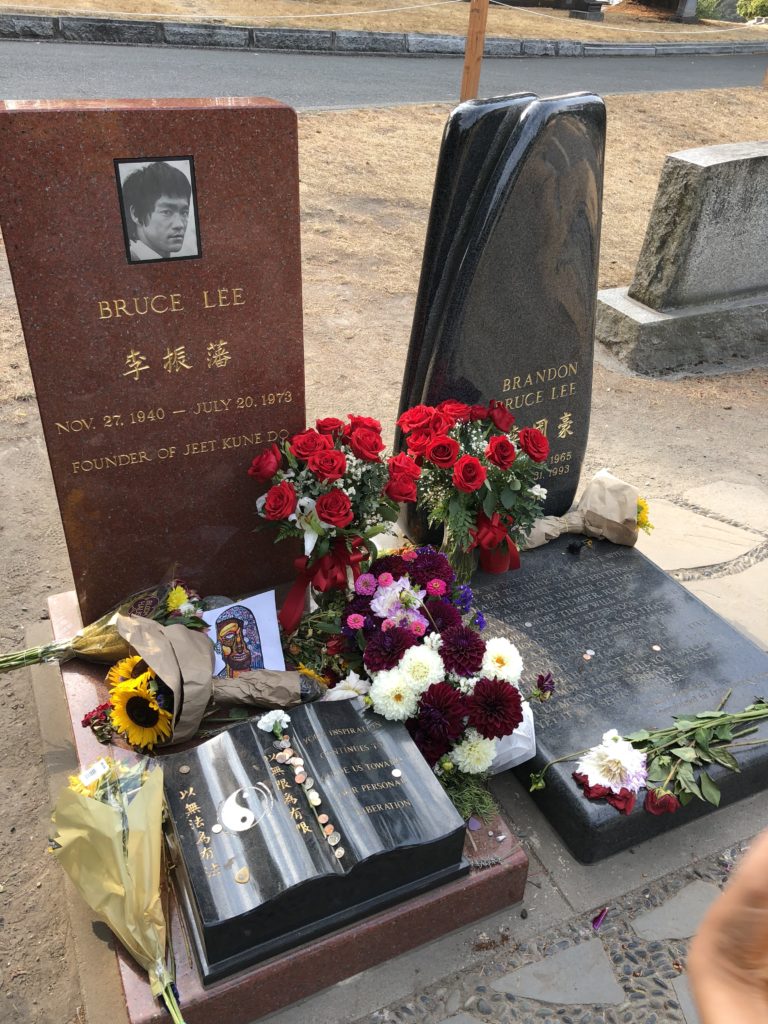
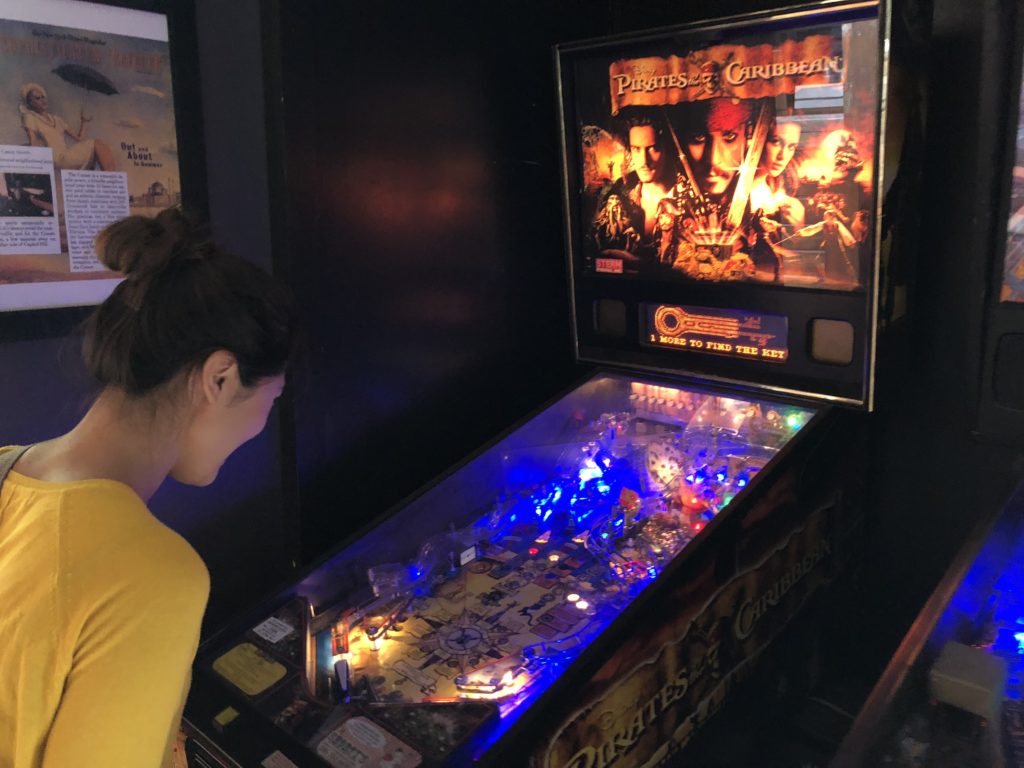
(again?!)
